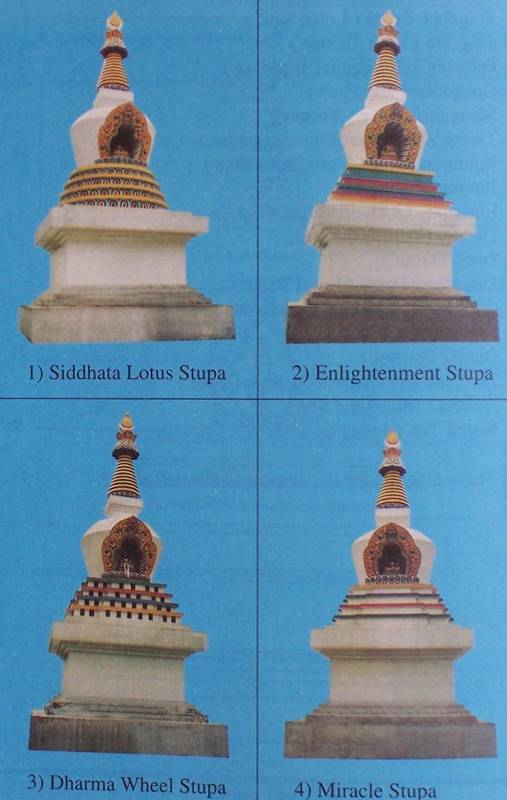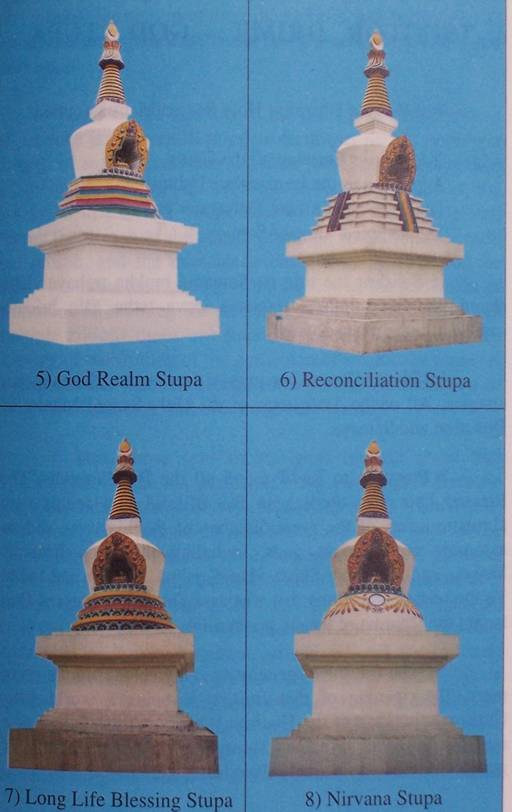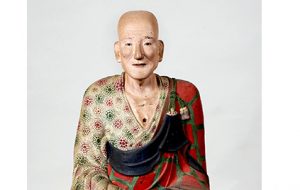Editor’s Note: Dr. Andrey Anatolyevich Terentyev studied Sanskrit, Tibetan and Indian Philosophies and Religions. He obtained his Ph.D. in the field of Oriental Studies (Russia). Currently, he is a visiting lecturer at the International Buddhist College.
Symbolism of the st?pa
??kyamuni Buddha ordered his disciples to place his ashes into a st?pa built at a cross section of four roads, as was the contemporary Indian tradition for the funerals of great men. When the Buddha passed away, his remains were divided among eight kingdoms, where eight st?pas were built. The designs of these eight st?pas are also symbolic of the eight major events in the Buddha’s life:
1. His birth
2. Enlightenment
3. The first ‘turning of the Wheel of Dharma’ (preaching)
4. Descent from the heavens, where he had preached to his mother
5. The performance of miracles in contests with non-Buddhist gurus
6. Reconciling a split in the Sa?gha
7. Voluntarily prolonging his life at Vaishali
8. Mah?parinirv??a
Starting with the first step of the foundation, each part of the st?pa is symbolic of some aspect of the Dharma. Because the st?pa is considered to represent the Mind of the Buddha in the triad of his body speech and mind, and likewise represent the Dharmak?ya amongst the three Buddha bodies, the st?pa symbolises the “Corpus of Teachings” (Dharmak?ya), which primarily means the 37 Dharmas of Enlightenment. These Dharmas are ascribed to the elements of the st?pa architecture.
Different symbolisms:
1. The basic Earth platform symbolises withdrawing from ten nonvirtuous actions.
2. The four corners of the basic throne symbolises the Four Unlimited Qualities or Boundlessnesses: unlimited love, unlimited compassion, unlimited joy and unlimited equanimity.
3. The first step, facing all four directions (the base is square), stands for the four foundations of mindfulness (catt?ri satipa??h?ni): mindfulness of the body, of sensation, of mind, and of dharmas.
4. The second step symbolises the four perfect efforts (catt?ri samm?ppadhan?ni):the effort to destroy evil that is present, to prevent the arising of evil not yet present, to produce good that is not yet present, to encourage and cultivate the good that is already present.
5. The third step symbolises the four bases of miraculous abilities (catt?ro iddhipada) which enlightened ones are said to have attained: the desire to act, energy thought investigation, perserverance and action.
6. The fourth step symbolises the five spiritual faculties (pañcendriy?ni):
faith, energy, mindfulness, concentration, and reason.
7. The circular base of the dome represents the five forces (bala): the forces of faith, energy, attention, concentration and knowledge.
8. The anda, ‘treasure vase’, or dome, stands for the seven branches of awakening (Bodhya?ga): the total memory (of past lives), the perfect knowledge of all dharmas, diligence, spiritual ecstasy, the perfect mastery of all disciplines, concentration and equanimity.
9. The ‘harmika’ on top of the dome, wherein the spire is based, represents the noble eightfold path: perfect view, perfect understanding, perfect speech, perfect action, perfect living, perfect effort, perfect attention, perfect concentration.
The spire, or ‘tree of life’ symbolises the ten knowledges
1. knowledge of the Dharma
2. knowledge of the thoughts of other’s
3. knowledge of relations
4. empirical knowledge
5. knowledge of suffering
6. knowledge of the causes of suffering
7. knowledge of the annihilation of suffering
8. knowledge of the way that leads to the annihilation of suffering
9. knowledge of the things connected with despair, and
10. knowledge of the non-production of things
The thirteen rings on a spire symbolize the ten bodhisattva stages, or the ten Buddha powers, being:
1. knowledge of places suitable for preaching
2. knowledge of the ripening of different kinds of Karma
3. knowledge of all of the states of meditations within higher spheres
4. knowledge of the superior and inferior faculties
5. knowledge of the different inclinations of other beings
6. knowledge of the different spheres of existence
7. knowledge of the ways that lead to a desired end
8. knowledge and recollection of former existences
9. knowledge of the time of one’s/another’s death and rebirth
10. knowledge on how to destroy evil forces;
and the three foundations of the mindfulness of the Buddhas.
The umbrella and its support symbolise the Victory of awakening.
The Moon symbolises the elimination of all sufferings.
The sun symbolises the light of compassion.
The jewel at the top, or ‘nada’ symbolises the fulfillment of all wishes.
In another, late Mah?y?na interpretation, the moon, sun and the ‘nada’ symbolize compassion, wisdom and the subtlest mind.















